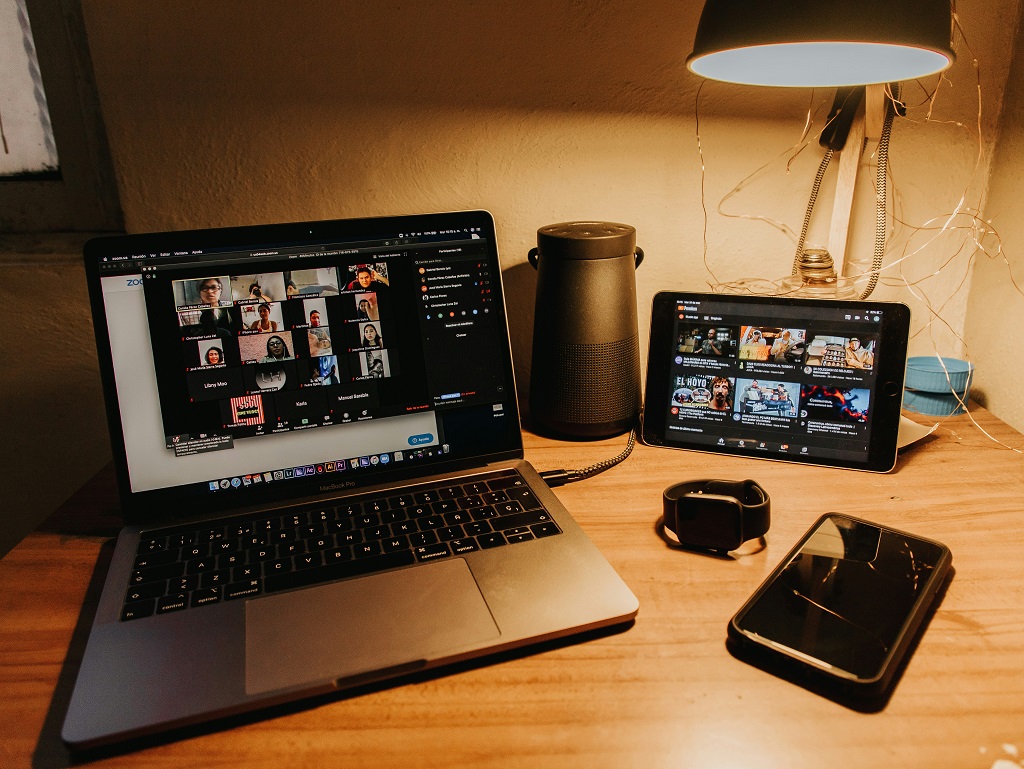Someone is trying to book help on a website. They’re typing questions into a chat box, toggling to email, copying links into a video app, switching windows back and forth. It feels disjointed and slightly ridiculous — all anyone wants is to just look at each other and talk. A real conversation is faster than a thread of messages, clearer than a support article, and more personal than an FAQ page.
Businesses feel this shift. People aren’t only looking for answers; they’re looking for presence. They want to see who they’re dealing with, know they’re heard, and feel like they’re in the right hands. Which is why so many companies choose to integrate video call into website directly instead of sending users off to external platforms.
This isn’t about adding “another feature.” It’s about making the moment of contact simple, human, and direct — and building trust the second the camera turns on.
Why Businesses Are Embedding Video Calls

When someone reaches out for help, guidance, or information, they aren’t just asking for data — they’re reaching for clarity. Talking face-to-face speeds that up. A real conversation builds trust faster than chat threads, email chains, or form submissions. That’s why companies of all sizes have started to integrate video conferencing directly into their sites. It reduces friction. It turns hesitation into action.
Some fields feel the impact immediately:
- Telehealth and therapy, where tone and presence matter.
- Coaching and education, where guidance happens in the moment.
- Real estate tours, where a camera can walk someone through a space miles away.
- Product demos and sales, where understanding comes through demonstration.
- Customer support, where empathy is part of the solution.
The benefits are practical and visible:
- No switching between platforms
- A private space that aligns with the brand’s tone
- Higher conversation-to-purchase conversion
- Clients feel like they’re being taken seriously
It also changes the emotional dynamic. When someone sees your face, hears your voice, and has your attention, they relax. The whole interaction softens.
Picture this: a counselor meets a new client. Instead of a generic meeting link, the client opens a secure page on the counselor’s own site. One click. They’re there. No passcodes. No confusion. Just the two of them, present.
This is the core value of choosing to integrate video call into website: the conversation happens inside your space. Not rented from a third-party app. Not shared with random participants in a waiting room.
It feels grounded. It feels intentional. And it shows the person on the other side that you’re willing to meet them directly.
Approaches to Adding Video Calling

There isn’t just one way to place video inside a website. The right method depends on how much control you want over the experience, how fast you need to launch, and how personal the interaction should feel. Some businesses just need a simple, click-to-join call window. Others want something shaped around their workflow — scheduled sessions, login permissions, private rooms, recorded consultations, and clear identity handling.
So the choice usually comes down to two paths: something fast and lightweight, or something more customizable and long-term.
Simple Embeds (If You Need Something Fast)
The quickest way to put video inside your website is to embed video conferencing using an iframe, widget, or pre-built room link. It’s essentially the same as embedding a YouTube video — except this one is interactive.
This works well if you’re testing an idea, launching quickly, or running small sessions. You paste a short code snippet into your site, and the call window appears wherever you want it.
Pros:
- Very fast to launch
- Minimal setup
- Works even if you have limited technical skills
Cons:
- You don’t control the exact layout or styling
- The call experience may not fully match your brand
- Feature set is whatever the provider supports — no deep customization
It’s a solid way to start, especially if your priority is getting conversations happening today. But once your calls become part of your core service, you’ll likely want tighter control.
Using an API or SDK for Custom Control
APIs and SDKs allow you to build something that feels like your own.
An API provides the underlying functions — start call, end call, manage participants, handle permissions. You connect these to your server and user system.
An SDK gives you building blocks: interface components, device controls, screensharing buttons, chat panels — pieces you can arrange the way your workflow needs.
This approach fits businesses that care about:
- The flow of how a call begins and ends
- How users log in or authenticate
- Consistent brand look across every screen
- Stability under many simultaneous sessions
It also gives room to work with video quality tuning, WebRTC performance, and mobile responsiveness — so the call doesn’t freeze the moment someone switches to 4G.
You can embed video conference elements inside custom pages, or use an embed video conferencing API to connect sessions directly to your user accounts. Teams that want recurring sessions or classroom-style layouts often choose to integrate video conference SDK solutions. And when scaling across many users, video conferencing API integration keeps performance stable while giving you control.
This route asks for more thought, but the experience becomes fully yours — and that’s where things start to feel polished and intentional.
Use Cases & Industries That Benefit Most
Video calling makes the most difference in moments where tone, timing, and presence matter. Not broad categories — real, human situations.
A therapist checks in with a client who’s been having a rough week. The call opens directly inside the therapist’s site — no codes, no lobby screens. The client sees a familiar face and relaxes. This is why some professionals choose to add video conferencing to your website instead of sending people off to third-party apps. The container of the session becomes part of the care.
A language tutor has weekly lessons with students from different cities. They meet in the same branded call room every time. The whiteboard is always there. The notes remain. The environment feels stable — like a classroom that happens to live online. That consistency is what makes progress feel real.
A fitness coach leads a client through slow breathing and shoulder positioning. The client mirrors movements in real time. If the coach had to explain that through chat messages or recorded clips, it wouldn’t land the same way.
A support specialist helps someone troubleshoot something technical. They can see the person’s expression shift from frustration to relief. That emotional shift is the actual service.
If you’ve ever wondered how to add video calling to your website, the answer starts here: think of the moments where being present changes the outcome. That’s where the work feels meaningful — and where embedding video becomes more than just a feature.
Practical Considerations: UX, Privacy, Stability

Once you integrate video call into website, the way the call feels becomes as important as the call itself. A session can technically “work,” but if the user is staring at confusing pop-ups, tiny buttons, or shaky video, the atmosphere breaks. The goal is to make the call start smoothly and stay grounded.
One of the first points is the camera + microphone permission step. If the browser throws a generic permission box with no context, people hesitate. A short line like: “We’ll use your camera for the session — you can disable it anytime” removes uncertainty instantly.
Connection quality and layout shape emotional tone. The interface should stay calm, uncluttered, and steady even when bandwidth shifts. Smooth fallback (resolution adjusts instead of freezing) keeps the conversation intact.
Some features genuinely help when used with intention:
- Chat: for sending links, spelling names, clarifying short points
- Screen sharing: when explaining steps or showing visual materials
- Session notes: for tutors, therapists, or coaches who track progress
Mobile support matters too. A person holding a phone upright shouldn’t struggle to see the other person’s face. Keep controls reachable by thumb. Keep gestures simple.
Privacy needs to be visible, not assumed. People trust environments where the rules are clear:
- Calls are encrypted
- No recording happens without consent
- Data stays within the host’s system
Whether you use an SDK, a custom integration, or simply embed video call into a page, the core aim is the same: make the interaction feel natural enough that the technology disappears in the background.
Implement Turnkey Video Calling with Scrile Stream

At some point, the video calls become part of the core service — not just an add-on. When that happens, you need something that feels like it belongs to your business. Scrile Stream is built for that. It’s not a template-based meeting room or a generic conferencing app. It’s a custom development service that shapes the video experience around how you work.
You aren’t forced into someone else’s layout or workflow. You choose:
- How the interface looks — colors, layout, tone
- User roles — host, client, member, guest
- Paid session models — one-off sessions, subscriptions, packages
- Scheduling & waiting rooms — structured or flexible
- Authentication rules — private communities, client lists, team access
Everything stays inside one branded environment. No jumping to external meeting links, no “download this app first.”, no platform logos overshadowing your own identity. Your clients feel like they are entering your space, not someone else’s.
This matters most when the connection itself is part of the business — therapists, coaches, tutors, advisors, support teams, consultative sales. The video call becomes the room where trust builds.
And when you integrate video call into website using Scrile Stream, you keep ownership over your data, your users, and your revenue. The platform grows as you grow — from one-to-one sessions to group calls, private communities, or structured programs.
If the goal is to make the call feel natural, intentional, and seamlessly part of your world — Scrile Stream gives you the foundation to build exactly that.
Conclusion
Video isn’t just a function. It’s the moment two people see each other and understand what they mean. When you integrate video call into website, you keep that moment inside your own environment — not scattered across links, downloads, and third-party interfaces. The relationship lives where your brand lives.
The advantage shows up quickly: conversations feel smoother, trust builds faster, and decisions happen with less confusion. People feel taken care of when the call experience matches the tone of the service behind it.
If you want help shaping a video space that feels personal, steady, and connected to how your business actually works, talk to Scrile Stream. They build the environment to fit you — not the other way around.

Polina Yan is a Technical Writer and Product Marketing Manager, specializing in helping creators launch personalized content monetization platforms. With over five years of experience writing and promoting content, Polina covers topics such as content monetization, social media strategies, digital marketing, and online business in adult industry. Her work empowers online entrepreneurs and creators to navigate the digital world with confidence and achieve their goals.

